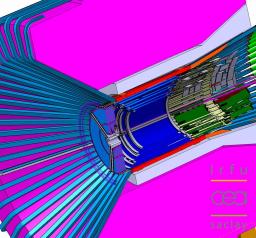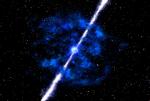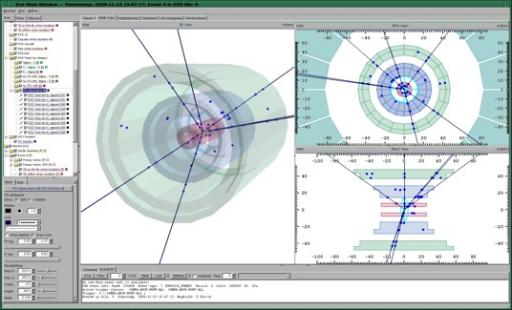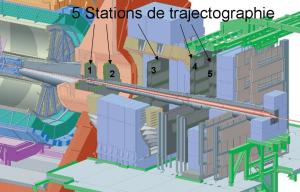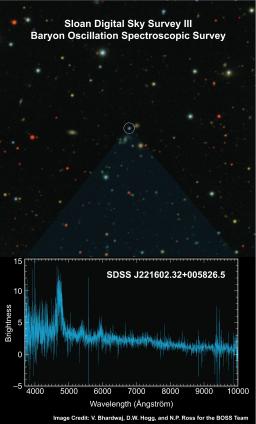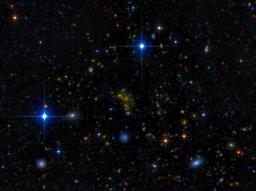The Fermi gamma-ray space telescope [1] has detected the most violent gamma-ray burst ever recorded; a gigantic explosion marking the death of a massive star. Light from this explosion, captured by the Fermi observatory on September 16th 2008, had taken 12.2 billion years to reach Earth. Hence, it must have been produced at a time when the Universe was just 1.5 billion years old. The total amount of energy released makes this the most violent explosion observed in the Universe since the Big Bang. Observed by the Fermi on scales covering more than six decades in energy, this gamma-ray burst demonstrated exceptional properties. Clouds of charged particles were catapulted out during the explosion, at a speed equal to 99.9% of the speed of light! This work, the result of the international Fermi collaboration, with partners from CEA-Irfu, was published on February 19th 2009 in the journal Science express.
Monday, 23 November 2009, marked the first particle beam collision inside the large detectors of the LHC. ALICE saw its first collisions at an energy of 900 GeV, enabling it to check for correct operation of the 18 large detectors which comprise it. Since 27 November, with just a few days worth of data, the collaboration has even published an article confirming some existing measurements. The group from the IRFU, who are responsible for the dimuon arms, had to await more stable beam conditions in order to see their detectors reacting to the data coming from the collisions and, on 6 December, all the gaseous detectors were able to be powered up. The traces from the first muons could be successfully reconstructed, to the great satisfaction to all the team. They are now eager to begin collecting more data after the planned restart in February 2010.
At the end of March 2009, the ALICE Muon Spectrometer took cosmic rays over a period of two weeks. The ALICE group at Saclay2 was closely involved in the design, development, construction and installation of a part of the chambers of this Spectrometer3. The purpose of the cosmic ray test was to check the performance of the entire system, from acquisition to reconstruction of the data. The acquisition system readout about a million channels and the data was recorded on the computing grid. Almost 15,000 tracks were reconstructed under conditions close to those of the real experiment. The cosmic test was a success, demonstrating the performance and the stability of the spectrometer chambers. It also revealed some weak points of the system. Tests are currently underway to correct the observed defaults.
Another cosmic test is planned for August, a few weeks before the first LHC beam injections, involving all ALICE detectors.
Contacts:
The Baryon Oscillation Spectroscopic Survey - known as Boss - delivered its first data during the night of 14-15 September. This experiment, devoted to the search for baryon oscillations, heralds the start of a new era of research into dark energy and the evolution of the Universe. Several teams are involved in BOSS, in particular from IN2P3(1)/CNRS, INSU(2)/CNRS and CEA.
The Supernova Legacy Survey (SNLS) team at the Canada-France-Hawaii Telescope facility has just obtained the world's best measurement of the explosion rate of massive stars when the Universe was only 10 billion years old. A research team at IRFU's particle physics department at the CEA-Saclay centre worked on the first three years of SNLS data to obtain this result, which makes a crucial contribution to our understanding of the origins and evolution of chemical elements in the interstellar medium. The measurement seems to show that there are two to four times fewer supernovae today than 3.7 billion years ago. Could the Universe be burning out?
Contacts:
Nathalie PALANQUE-DELABROUILLE

